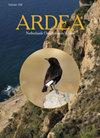Stress and Body Condition Predict Haemosporidian Parasitaemia in Birds from Cerrado, Southeastern Brazil
IF 1.3
4区 生物学
Q3 ORNITHOLOGY
引用次数: 1
Abstract
Stress may be defined as a change in the homeostasis of an individual. However, if long-lasting, stress may produce significant detrimental effects to individuals, such as increasing the susceptibility to haemosporidian parasites. Therefore, we aimed to study whether and how stress and body condition predict the probability of hosts having haemosporidian parasites and increased parasite load. We captured birds in an area of Cerrado stricto sensu in southeastern Brazil and used microscopy techniques to assess haematological parameters, as well as infections by protozoans, and confirmed all infections using nested PCR. We used the heterophil/lymphocyte ratio and global leucocytes as a proxy of individual stress and the scaled mass index as a body condition metric. We captured 68 individuals from five bird species: Ruddy Ground-dove Columbina talpacoti, Great Kiskadee Pitangus sulphuratus, Lesser Elaenia Elaenia chiriquensis, Flavescent Warbler Myiothlypis flaveola and Brown-crested Flycatcher Myiarchus tyrannulus. We did not find support for parasite prevalence being predicted by body condition or haematological variables. However, we found that birds with a higher heterophil/lymphocyte ratio, lower body condition and lower global leukocyte count, were more likely to have a higher parasite load (haemosporidian parasitaemia). Our results suggest that birds with chronic stress and poor health may be more susceptible to greater infection intensity and/or recrudescence episodes by malarial parasites due to previous immunosuppression.压力和身体状况预测巴西东南部塞拉多鸟类的血孢子虫寄生虫病
压力可以定义为个体体内平衡的变化。然而,如果压力持续,可能会对个人产生重大不利影响,例如增加对血孢子虫寄生虫的易感性。因此,我们旨在研究压力和身体状况是否以及如何预测宿主感染孢子虫寄生虫和寄生虫负荷增加的概率。我们在巴西东南部严格意义上的塞拉多地区捕获了鸟类,并使用显微镜技术评估血液学参数以及原生动物感染,并使用嵌套PCR确认了所有感染。我们使用嗜异细胞/淋巴细胞比率和全局白细胞作为个体压力的指标,使用量表质量指数作为身体状况指标。我们捕获了来自五种鸟类的68只个体:Ruddy Ground dove Columbina talpacoti、Great Kiskadee Pitangus sulfuratus、Lesser Elaenia Elaeniachiriquensis、Flavatent Warbler Myiothlypis flaveola和褐冠捕蝇草Myiarchus tybroulus。我们没有发现通过身体状况或血液学变量预测寄生虫流行率的支持。然而,我们发现,具有较高的嗜异性/淋巴细胞比率、较低的身体状况和较低的全球白细胞计数的鸟类更有可能具有较高的寄生虫载量(血孢子虫寄生虫血症)。我们的研究结果表明,由于先前的免疫抑制,患有慢性压力和健康状况不佳的鸟类可能更容易受到更大的感染强度和/或疟疾寄生虫的复发。
本文章由计算机程序翻译,如有差异,请以英文原文为准。
求助全文
约1分钟内获得全文
求助全文
来源期刊

Ardea
生物-鸟类学
CiteScore
2.10
自引率
0.00%
发文量
49
审稿时长
>12 weeks
期刊介绍:
Ardea is the scientific journal of the Netherlands Ornithologists'' Union, and is published since 1912. The journal welcomes manuscripts reporting significant new findings in ornithology, in particular those covering the ecology, life history, and evolution of birds, and including sound descriptive work. Ardea publishes Original research papers, Short notes and Book reviews. In addition to the regular three issues per year, Ardea publishes specials that contain conference or workshop proceedings (produced on request).
 求助内容:
求助内容: 应助结果提醒方式:
应助结果提醒方式:


